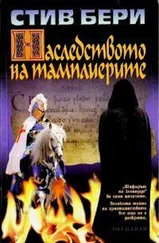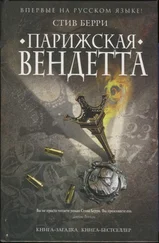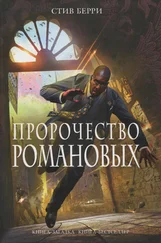“I thought it time we talk,” Schüb said, the voice nearly inaudible.
Perhaps the whispered tone was intentional, coming from someone who rarely repeated himself.
“You’re supposed to be dead,” Cassiopeia said.
“As are you.”
“Ada kept you informed?” Cotton asked.
“She is a dear and loving sister.”
It almost seemed painful for the old man to speak, his vowels reluctant to surrender to consonants, the rasp of cigarettes clear.
“Jan is your son?” Cassiopeia asked.
The old man nodded. “A good boy. He lied to you today about Josef Engle and Ada on my instructions. I still, as of then, had not decided what to do.”
“And now?” Cotton asked.
“The others are dead. Only I remain. Perhaps I am meant to end all of this.”
“And Ada?” Cassiopeia said.
“She has done a good job in Chile. Now the rest is up to me.”
“Why did you never go back there?” Cotton asked.
“By the mid-1960s there was no way I could ever return to Chile. I had lived here for nearly twenty years. This was home. I had acquired property, stature, friends.”
“Apparently a wife, too,” he said.
Schüb nodded. “Another lovely woman who loved me. Jan was born, and he meant a great deal. So I made the decision to stay. Ada and I both decided to fulfill our duties to our father. Separately.”
“Can you tell us how Bormann and Braun came to Africa,” he asked, hoping the old man would answer.
Schüb stood silent for a moment, then spoke in the same funereal tone.
“Let us take a walk and I will tell you a story.”
Within hours of Hitler’s suicide, Bormann donned the uniform of an SS major general, crammed papers into a leather topcoat, and fled the Führerbunker. On the Weidendammer Bridge he encountered bazooka fire, but managed to flee the scene with only minor injuries. He commandeered a stray vehicle and drove to another underground bunker constructed in secret by Adolf Eichmann, equipped with food, water, and a generator. He stayed there a day, then slipped out of Berlin and headed north, dressed in the green uniform of a forest warden.
Across the Danish border he found a rescue group, stationed there weeks before, to aid fleeing Nazis. He had prepared himself for the journey months earlier by burying two caches of gold coins, one in the north, the other in the south. He’d also secreted away banknotes and art treasures in various Swiss vaults that could later be converted into cash. He’d long ago overseen the deposits of huge sums of gold and currency in South American banks. His political position gave him access to planes, cargo ships, and U-boats, and he utilized that privilege in the early months of 1945 to transport out of Germany all of what might be needed in the years ahead.
Aktion Aderflung and Aktion Feuerland were in place .
Projects Eagle Flight and Land of Fire would now serve their function.
By the end of 1945 Bormann was in Spain. He stayed there until March 1946. His face was relatively obscure until October 1945 when, after he was indicted for war crimes, his picture was posted throughout Europe. It was then he decided to leave the Continent, but not before dealing with Eva Braun.
Throughout the war she was intentionally kept in the background, denied the spotlight, and forced to remain most of the time in the Bavarian Alps. Only those in Hitler’s innermost circle were familiar with her face, so it was easy for her to meld into the postwar world. She’d returned to Berlin against Hitler’s order on April 15 to inform him she was pregnant. Hitler took the news with surprising calm, but delayed fourteen days before finally marrying her. During that time he arranged, through Bormann, for her escape. By April 22 Hitler knew that he would never leave the bunker alive. He wanted to die a martyr. Braun objected to her surviving. She wanted to die with Hitler. But the Führer would not hear of it, particularly considering she was pregnant.
Finally, she agreed to do as he asked.
A female SS captain who possessed a similar build and look to Braun volunteered to take her place, proud of the fact that she would be with Hitler in his final moments. That woman entered the bunker on April 30, around 1:00 P.M., an hour before Hitler and Braun were scheduled to lock themselves away for the final time. In the confusion of that day no one noticed the switch. People were routinely coming and going. With Bormann watching, she bit down on a cyanide capsule and ended her life. Her body, clothed in a blue dress identical to one Braun would be wearing, was kept in an adjacent anteroom.
Bormann was the first to enter the bedroom after Hitler died.
He promptly covered Braun’s body on the pretense of protecting her dignity. He realized all focus would be on Hitler, and he was correct. Braun’s task was to lie still and be dead. It was Bormann who carried her from the bedroom and momentarily deposited her body in an anteroom, after being called by a guard. That act was not prearranged, but it allowed Bormann an easy opportunity to switch the bodies, leaving Braun hidden in the anteroom while her substitute was burned with Hitler in the Chancellery garden above. In the confusion that occurred after, Braun, her physical appearance altered by disguise, and dressed as the SS captain who’d arrived hours earlier, left the bunker.
She was flown out of Berlin to Austria on one of the last flights. From there she traveled by train to Switzerland, no different than thousands of other displaced women. Her face was unimportant. Her name virtually unknown. So her journey, using new identity papers and money provided by Bormann, was quite easy.
Eventually, she arrived in Spain.
They stayed there until the spring of 1946. Transportation out of the country was arranged on an oil transport by a Greek sympathizer, Bormann and Braun arriving in Brazil a month later. Eventually, they traveled to Chile. Nazis had congregated there since the war, most in heavily fortified estancias south of Santiago. All part of Project Eagle Flight. They settled near the Argentine border in the lake district, until the lure of Africa drew them back across the Atlantic.
“I heard that tale from Bormann on more than one occasion,” Schüb said. “So much that I know every detail. He ridiculed Braun until the day she died. Belittling and degrading her in a most horrible way. He wanted her never to forget what she owed him. He enjoyed being in the superior position, and liked for people to owe him.”
Cotton was amazed at what he was hearing.
“They were eventually legally married here, in the Free State,” Schüb said. “Under their assumed names. Luis and Rikka Soreno.”
“Why did she stay with him?” Cassiopeia asked. “History says she hated Bormann.”
“She became with child again, and no one wanted an illegitimate offspring. Sadly, Braun loved Hitler. She had a special place for him in her heart. I guess what is said is true. There really is someone for everyone. Even a monster. Hitler made it clear he wanted her to go with Bormann and raise their child. So she obeyed, but Bormann had other ideas. He was most difficult to live with. But she liked to make fun of him behind his back. Her favorite description was as an oversexed toad. ”
“So she married him for the child?”
Schüb nodded. “As did Bormann marry her. Strange was his personality. Capable of murdering millions, yet concerned that his offspring would be chastised as a bastard.”
“Did she give birth to their child?” Cotton asked.
“She birthed twin boys. Quite unexpected. And difficult, too.”
Читать дальше












